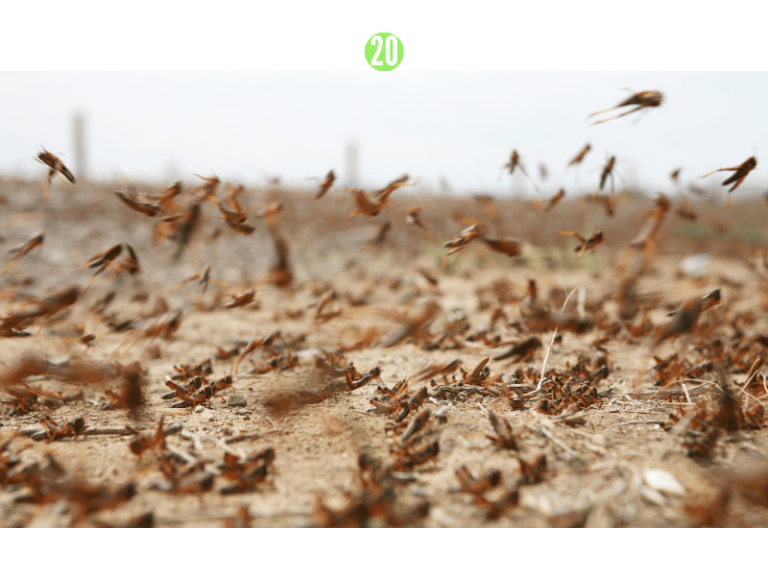People are often amazed by the swarming behavior of locusts. Indeed, whether they are flying in the sky or resting on the ground, they always maintain their social nature, rarely living in isolation. Such locusts are called the gregarious phase of migratory locusts.
This gregarious phase is the result of their living habits and environmental influences.
First, let’s look at their egg-laying habits. When female locusts lay eggs, they have quite strict criteria for selecting a site. Generally, they prefer hard soil with a certain temperature and direct sunlight. Such conditions are rare in the vast fields, so they often concentrate their egg-laying in a relatively small area, creating dense egg masses (each containing about 55-115 eggs). Additionally, the small variation in temperature and humidity in these areas leads to synchronized hatching, causing the nymphs to naturally form a habit of clustering together. This lays the foundation for their future swarming behavior as locusts.
Like their nymphs, locusts swarm because of physiological needs. Unlike warm-blooded animals, their body temperature is similar to the surrounding air temperature. However, they require a higher body temperature to promote and adapt to active physiological functions, which is a unique physiological characteristic.
To meet this requirement, they must cluster together, staying close to one another to maintain their body temperature and prevent heat loss. Additionally, they need to continuously absorb heat from the environment to increase their body temperature and enhance physiological activities. Therefore, they always move in swarms, and their migration direction always follows the sun. Since gregarious locusts share this common physiological trait, when a few locusts start to hover in the air before forming a swarm, this dynamic stimulus quickly attracts other locusts on the ground, prompting them to join in. This way, their swarms not only form rapidly but also grow larger in size.

